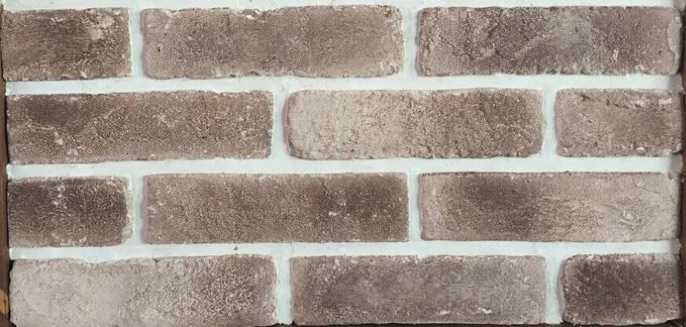QUESTION
I am bidding 10,000 to 12,000 square feet of thin brick. And I thought some advice would be prudent!
Would you care to share with me some of the tips and methods you put together? Any advice would be very much appreciated!
ANSWER
The NTCA Reference Manual has an upcoming white paper that deals with grouting thin brick; I will highlight some of those upcoming best practices.
If your project is in an interior dry location, then a standard grout (ANSI 118.6) or a Type S or N mortar may be acceptable, depending upon the environment it’s exposed to. (Please see the Environmental Exposure Classifications page in your TCNA Handbook).
However, since you have said that it is 10,000+ square feet, I am basing the following comments on the assumption that this project will be on an exterior wall location. When grouting thin brick in an exterior environment, installations using a standard cement grout (ANSI 118.6) or a Type S or N mortar have had their share of problems. These types of grout/mortars are easier to install using a grout bag with metal tips and they usually give the installer extended time to tool the joints. The problems are revealed when these installations are exposed to rain or freeze/thaw situations. These problems include the likelihood of efflorescence in wet areas and spalling in freeze/thaw applications. So for these reasons, standard cement grouts and mortars are not the “best” practice when it comes to grouting thin brick.
High-performance grout (ANSI118.7) is typically recommended by setting material manufacturers to minimize efflorescence and block water penetration into and through the grout. Installing these types of grouts has challenges, however, when they’re being used with typical wire cut (rough texture) thin brick.
These grouts usually use rapid-curing cement that gives the grout its high-performance characteristics, but these same qualities make them exceptionally difficult to clean from the face of the bricks. Additionally, the stiff texture and rapid setting of many high-performance grouts don’t lend themselves to being installed with a grout bag. If you soften the grout up by adding additional water to make bagging easier, you weaken the grout and it typically won’t stay in the joint, sagging onto the face of the brick, resulting in the problem you are trying to avoid by using a grout bag – getting grout on the face of the brick. Then you have to scrub the brick to try to clean it, many times resulting in low joints.
Some contractors have found it helpful to use grout release (sometimes multiple coats are necessary), penetrating sealers, or even applying a sacrificial wax coating prior to installing the thin brick to reduce the absorption of the brick prior to grouting.
However, each of these methods still has its own costs and challenges. Many will require an acidic type of cleaner and/or pressure washing. And the sacrificial wax coating will need to be removed after grouting and curing is complete by using a hot-water, high-pressure washer.
In view of these many challenges, it is always to your advantage to do a mock up prior to starting the job, as well as working with a setting material manufacturer and using its complete system (usually membrane, thinset, and grout), and consulting the thin brick manufacturer for its recommendations as well. Also ask your grout supplier if using one of their liquid admix products will give you the fluspeffy texture you’re looking for, since in certain grouts they’ve helped.
Some specifications for jobs that I have done require the grouting to be installed using a grout bag and others don’t. Therefore, some tile contractors qualify their bid to include their proposed method for installing the grout, joint treatment/tooling and cleaning method –including that while the face of the brick will be cleaned, the pits in the face of the brick may still contain some residual grout in them after final cleaning.
Hopefully this is some help, if you have any additional questions please feel free to email or call.
Thank you for your support of the NTCA.







